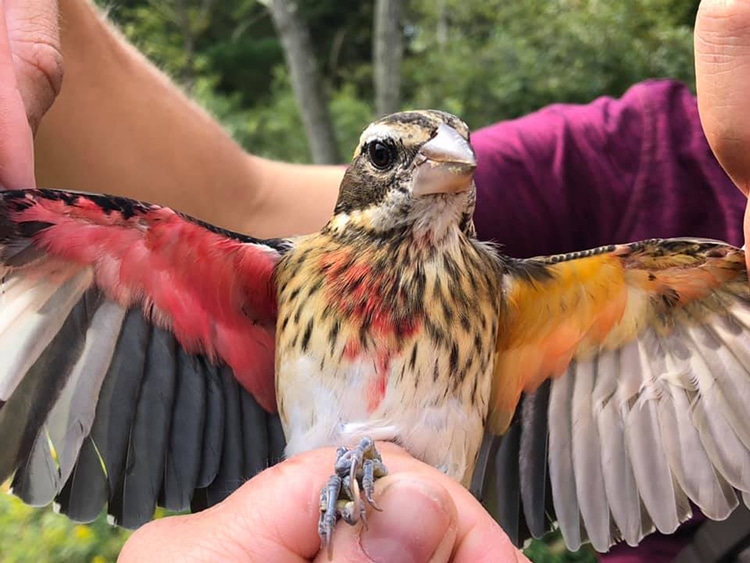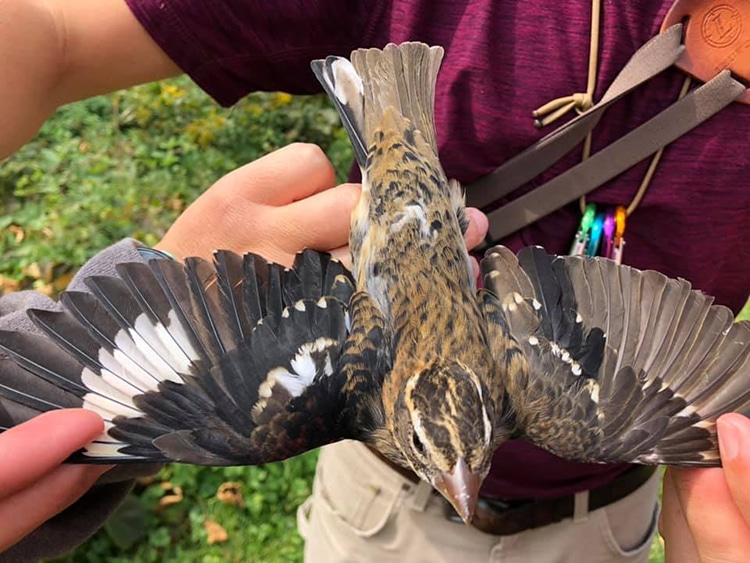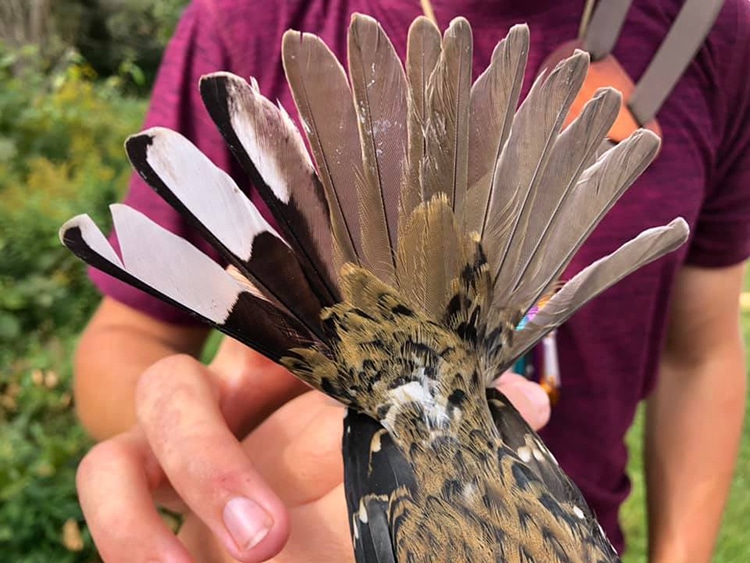A rose-breasted grosbeak gynandromorph bird.
The pink side corresponds to male genes, while the yellow feathers indicate female characteristics.
The team encountered, tagged, and photographed a very specialrose-breasted grosbeak.

A rose-breasted grosbeak gynandromorph bird. The pink side corresponds to male genes, while the yellow feathers indicate female characteristics. (Photo: Annie Lindsay /Powdermill Nature ReserveandCarnegie Museum of Natural History)
This appearance is characteristic of the male rose-breasted grosbeak.
However, as the grosbeak is a sexually dimorphic species, the males and females present different characteristic appearances.
The left side of the gynandromorph bird displays female characteristicsa yellow wing pit and more brown-tinted feathers.

Photo: Annie Lindsay /Powdermill Nature ReserveandCarnegie Museum of Natural History
Scientists believe that the sexual differences go beyond the feathers and may extend throughout each side of the bird.
So how do gynandromorph birds occur?
Scientists once believed that the condition was a result of two fertilized embryos fusing during development.

Photo: Annie Lindsay /Powdermill Nature ReserveandCarnegie Museum of Natural History
As a result, the fertilized egg can form two nucleione genetically male and the other genetically female.
Male birds carry double chromosome pairs (ZZ), while females carry alternate chromosomes (ZW).
Gynandromorph birds are perfectly natural and healthy, but scientists have wondered if reproduction is possible.
In addition, the one-wing presentation of male feather characteristics may intimidate potential mates and aggravate other male birds.
The researchers at Powdermill hope to watch their new feathery friend to learn more about this special creature.
Of the many thousands of birds tagged by the center since 1962,fewer than tenhave shown bilateral gynandromorph.